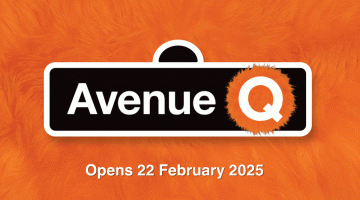
Interview with Joel Bray
By Chris Duncan
Arts House, Melbourne | 3 – 15 June 2025
Presented in partnership with RISING
In MONOLITH, Wiradjuri choreographer Joel Bray trades words for weight, text for tension, and dialogue for dance. Known for immersive and participatory works that weave audience interaction with theatrical storytelling, Bray has shifted direction. This latest work—an uncompromising exploration of protest, presence, and power—centres five fierce Brown bodies moving as one immovable force: a monolith of resistance.
When I sat down with Bray in the lead-up to MONOLITH’s premiere at Arts House, he spoke candidly about the evolution of the work, its deeply political undercurrent, and the unexpected emotional beauty that emerged from a place of cultural grief.
From Gag Order to Geological Time
“MONOLITH started out as a very different work,” Bray reveals. Initially titled Gag Order, the project began during the Indigenous Voice to Parliament referendum campaign. “I was thinking about why we were demanding a Voice rather than, say, a Movement or a Body,” he explains. “In Western culture, the Word—spoken or written—is honoured, even fetishised. Meanwhile, the body is dismissed. It plays out everywhere: dance receives less funding than theatre, and our education system values reading over movement.”

Originally, Bray planned to explore the idea of being silenced through the lens of both political oppression and Queer kink play. But, as he puts it, the work “wanted to go somewhere else.” And so, he followed.
Building the Monolith
Through improvisation with his ensemble—five young, powerful Brown women—Bray found a new vocabulary: one rooted in geological time. The movement they developed together was slow, specific, and tectonic—evoking not just emotion but landscape.
That connection to land became central. “They evoke a monolith—the ancient rock formations that sit in the landscape and defy deforestation and urbanisation,” says Bray. Onstage, the dancers appear fused into one colossal form. With the help of designer Jake Preval’s sculptural set and bespoke printed costuming, they create a visual illusion—one that greets audiences as they enter the performance space. “It’s a living trompe l’oeil,” Bray explains. “They are not just dancers—they are the land.”
Anchored in Story and Protest
Bray’s roots on Wiradjuri Country, in Orange, NSW, infuse the work with ancestral resonance. He speaks of Gaanha-Bulla, the great mountain whose dual peaks resemble shoulders—a monolith steeped in story, myth, and meaning. “Even when all of this—colonisation, urbanisation—has disappeared, Gaanha-Bulla will still be there, looking after Country,” he says.
This enduring connection between land and protest is not just symbolic. MONOLITH honours the quiet resistance of past generations—those who sat on the Freedom Ride buses, who maintained dignity in the face of violence at Tent Embassies and whites-only diners. “Stillness isn’t passive—it’s active resistance,” Bray says. That philosophy shaped much of the choreography: movement becomes meditation, silence becomes sound.
A Shift in Creative Process
While Bray is best known for his participatory performances, MONOLITH marks a return to traditional ensemble choreography. “It was an itch,” he admits. “I love making immersive work, but I missed the craft of pure dance-making. Working from the outside, with these phenomenal dancers, freed me from the limits of my own body. They’re strong, fit, virtuosic—I could let my imagination fly.”
The result is a rich layering of unison and individuality. Detailed solos break through sweeping group movements, allowing each performer’s personality to shine.
That freedom extended to his collaborators. Preval’s dystopian island of a set, Matthias Shack-Arnott’s evocative soundscape, and Katie Sfetkidis’ nuanced lighting were all developed in close collaboration from inside the studio. “No one stayed in their lane,” Bray says. “Everyone was part of shaping the themes, not just decorating them.”
Holding Space, Finding Joy
Despite the emotional and political depth of the work, Bray assures me the studio process was anything but heavy. “We contain multitudes,” he smiles. “The dancers are hilarious—we were constantly cracking jokes. The finale is wild and surprising. It’s not grim. It’s beautiful.”
Still, MONOLITH makes its statement with quiet conviction. It’s a reminder that occupation—of space, of time, of silence—can be a form of resistance. Bray sees it as part of a continuum. “I want to honour those who came before—the Black and migrant activists, the Elders. The fight isn’t over. Just being here, in our bodies, is a declaration.”
As we wrap up, Bray reflects on what MONOLITH means in the wider cultural landscape: “Look around. Some of the best work in this country is coming from Blackfellas. I see my work as one small stream pouring into a Big River of Black excellence. We didn’t freeze in 1788. We’re still making, still innovating, still moving.”
And with MONOLITH, Bray reminds us that sometimes, stillness moves mountains.
Read our article about Monolith here: https://www.dancelife.com.au/joel-bray-premieres-monolith/









